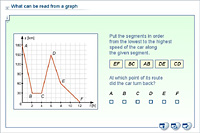
This factor helps the cruise control respond quickly to changes, such as hills. Remember that the derivative of speed is acceleration. Now let's add in the final factor, the derivative. After a little while, the integral control will start to increase the throttle, opening it more and more, because the longer the car maintains a speed slower than the desired speed, the larger the distance error gets. The proportional control increases the throttle a little, but you may still slow down. Let's say your car starts to go up a hill and slows down. This factor helps the car deal with hills, and also helps it settle into the correct speed and stay there. Translation: the difference between the distance your car actually traveled and the distance it would have traveled if it were going at the desired speed, calculated over a set period of time. The integral factor is based on the time integral of the vehicle speed error. We've already discussed the proportional factor.

Holding down the coast button will cause the car to decelerate, just as if you took your foot completely off the gas.If you recently disengaged the cruise control by hitting the brake pedal, hitting the resume button will command the car to accelerate back to the most recent speed setting.Holding down the set/accel button will make the car accelerate and on this car, tapping it once will make the car go 1 mph faster. If you hit the set button at 45 mph, the car will maintain your speed at 45 mph.



The set/accel button tells the car to maintain the speed you are currently driving.
#It takes more time to accelerate and decelerate when driver
Some cruise controls don't have these buttons instead, they turn off when the driver hits the brakes, and turn on when the driver hits the set button. The off button turns the cruise control off even if it is engaged. Hitting the on button does not do anything except tell the car that you might be hitting another button soon. The on and off buttons don't actually do much.


 0 kommentar(er)
0 kommentar(er)
